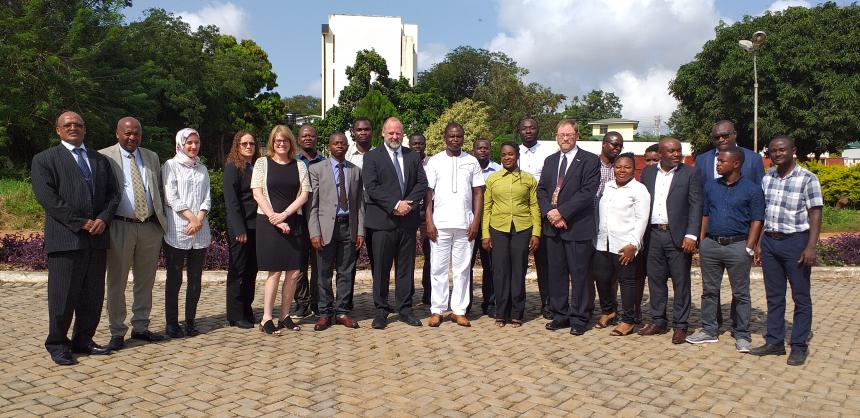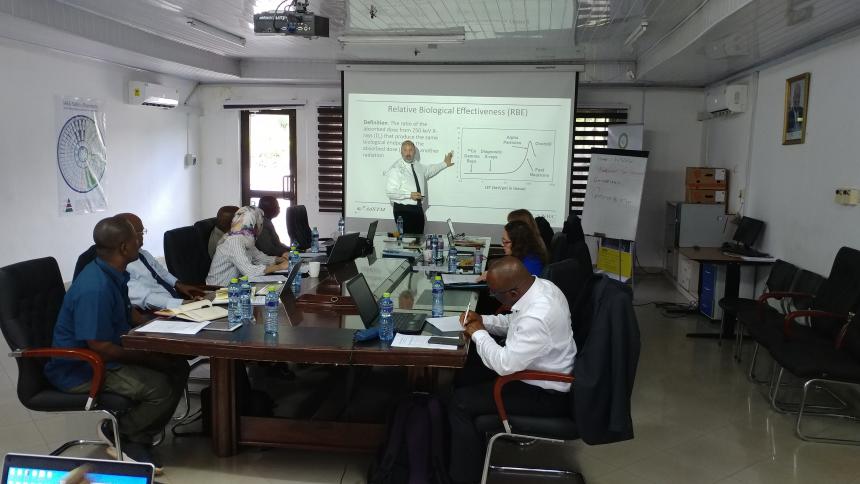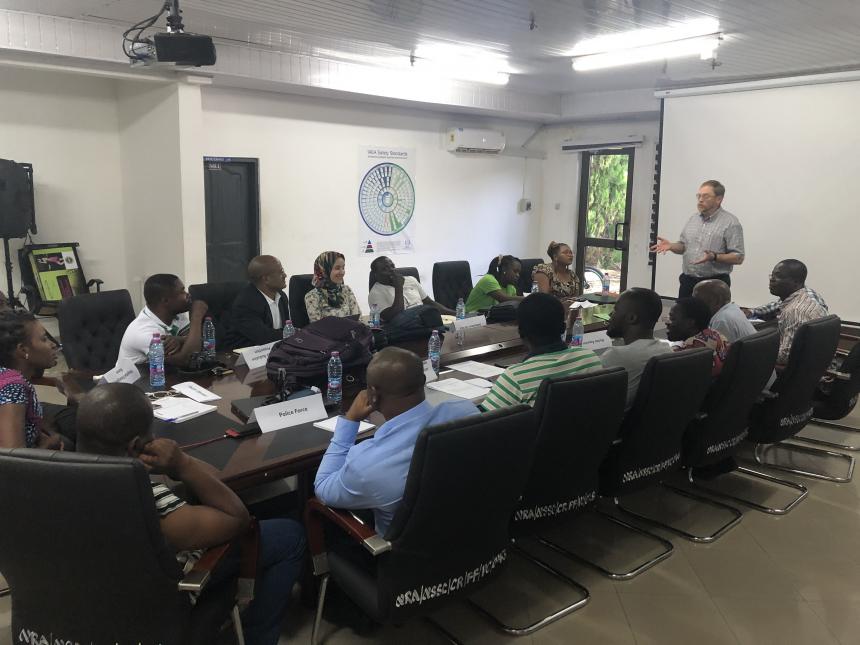


From November 18-22, 2019, the United States Nuclear Regulatory Commission’s (U.S. NRC) International Regulatory Development Partnership (IRDP) conducted a workshop on “Research and Test Reactor (RTR) Emergency Preparedness (EP)” for the Forum of Nuclear Regulatory Bodies of Africa (FNRBA). The Ghanaian Nuclear Regulatory Authority (NRA), an FNRBA member, hosted the IRDP workshop at its headquarters located in Accra, Ghana. Participants included nuclear regulatory officials from six African countries with varying responsibilities within their organizations including: licensing, inspection, emergency response, radiation protection, and safeguards and security.
Participating countries included: Morocco, Nigeria, Republic of Congo, and South Africa. Although not an FNRBA member, Ethiopia’s regulator, the Ethiopian Radiation Protection Authority, was invited to participate in the workshop because of a mutual interest in RTR EP. Additionally, staff from the NRA and the National Nuclear Research Institute, operator of the Ghana Research Reactor (GHARR-1), attended the workshop.
IRDP instructors, Mr. Rich Holm and Dr. Steve Reese, provided instruction on the U.S. NRC’s approach to emergency preparedness at a typical Research and Test reactor. The instructors discussed the current regulatory framework for RTR EP, emergency classifications, the U.S. Environmental Protection Agency Protective Action Guide Manual, and an Emergency Plan and supporting implementing procedures. The EP discussion was further enhanced by an extended discussion on the conduct and expectation of drills and exercises, and the complexity of coordinating with off-site agencies. Mr. Holm and Dr. Reese also discussed the similarities and differences between the U.S NRC and the International Atomic Energy Agency (IAEA) approach to RTR EP.
The workshop concluded with an interactive table-top exercise where each participant assumed the role of a different emergency agency or organization, which included the regulatory body, the RTR operator, the fire department, the police department, a public information officer, the general public, radiation protection officials, ambulatory medics, and hospital emergency personnel. The interactive exercise, in combination with the classroom instruction, very effectively demonstrated the complexity of handling an emergency.
